What Is Wood Composites?
Important Point
Wood compound is a broad tenure that includes a wide variety of man-made wood productions. Exemplifications are boards, plywood, parallels, and OSB.
All are made by bordering beaches, filaments, sawdust or pieces of wood together with cements and other constituents similar as recycled plastics. Mixes contain the same lumber as wood, but when connected with other complements, they come stronger and further durable.
They’re a fairly new substance assimilated to traditional mixes similar as MDF or chipboard but veritably popular. It’s also known as artificial wood, finagled wood, or Wood Plastic Compound (WPC). Composite wood is an admixture of several factors that may carry plastic, straw, and cement.
Patches and filaments from nonidentical manners of wood are connected with bonds to bind them together. Numerous people suppose that compound wood looks imitative. Composite wood is frequently exercised to make closets, cabinetwork, paneling, and flooring.
They’re less precious than hardwood but are frequently stronger and look precisely as good. Some companies shake compound wood construction because it can contain dangerous chemicals due to the substances exercised to integrate and bind the lumber patches.
The North American wood mixes request has exceeded $ 1 billion in deals over the once many times and is anticipated to grow 200 between 2015 and 2020.
Exploration shows that the US request for these productions will witness 20 periodic excrescencies over the coming decade. With the growing fashion ability of wood mixes, companies are developing new productions similar as rails, paneling and cladding.
Also, Read: Types of Wood
What Does Wood Composites Mean?
Some wood compound accouterments are made primarily of wood. For illustration, plywood is substantially real wood held together by cement.
But compound decking contains veritably little wood. Both are considered wood compound products. Man-made products similar as Timberless or Treks decking, plywood, and OSB are exemplifications of wood mixes.
The factual factors are generally wood veneers, filaments, pieces of beaches or sawdust. Fake constituents are generally made of plastics, cements and other unnatural accoutrements.
There are clearly some advantages to using a compound product which may include Greater continuity and strength Resistance to the rudiments No conservation Crack resistance It doesn’t stretch and contract as important as natural products It can have a flat smooth face that holds makeup really well still, there are also some disadvantages.
Composite accoutrements frequently have an advanced original cost and a false appearance. Even though they appear to be real when employing veneers.
Also Read: Heartwood Vs Sapwood
Is Composite Wood Fake Wood?
The type of compound you use will determine whether or not compound wood resembles dummy wood. There are so many potential outcomes that providing a firm answer is risky.
Then are some common exemplifications Lacquered closets are generally made from compound panels. Because it is painted, it appears to be real wood. Similar response for composite decking.
However, you will no way know the difference, if you paint the molding. Compound timber, like parallel joists, looks like pieces of wood fused together. Plywood is a compound wood. Some are made of fused veneers. This joe looks real. But plywood, which is made of wood pieces fused together, looks more fake.
Composite paneling aesthetics fake. Indeed, effects that are designed to look real still feel veritably fake to me. Thin rustic bottoms look like the real thing.
However, that is due to the thin wood veneer. You do not see the fake looking compound underpart when it’s installed. Compound wood generally doesn’t resemble wood.
However, that can be to your advantage. They lack face blights that are visible through the coating. MDF is frequently used for closets and interior panels.
It’s easy to work with, costs less, does not stretch and shrink too important, and holds color really well. As a result, almost all expensive closets come with MDF panels.
Also, Read: Is Cedar a Hardwood
What Is Composite Wood Made Of?
Composite timber is made from a variety of effects, similar as plastics, bonds, chemicals, and complements. Occasionally they contain a slim subcaste of real wood veneer on the outside.
The special constituents and rates exercised vary from brand to brand. Manufacturers frequently exercise recycled accouterments in their mixes.
Wood factors can carry sawdust, chips, glosses and other filaments. Polypropylene (PP), polyvinyl chloride (PVC), and/or polyethylene are commonly found in plastic rudiments (PR).
Manufacturers polish the substance with a wide variety of complements that support improve the plastic, cover against UV damage, and color the boards. The external subcaste is generally the bone that contains some real wood.
The inner layers are made of nonidentical accoutrements to boost energy, continuity, and save plutocrats. Composite accouterments are usually less precious than logical wood.
90 of association construction can be budget accoutrements with only a slim number of real woods fused on the outside. You get the appearance of real wood without the exorbitant expense, so this might be a positive thing.
However, as the wood is typically only a few millimeters thick, this could be problematic. However, good luck, if you need to beach or refinish the wood. You will not have important substance to work with.
Some mixes do not look real at all. Wood accoutrements are base and mixed with bonds, plastics and other accoutrements.
They do not indeed try to make it look real. This generally includes effects like repair.
Also, Read: What Is Acacia Wood
Artificial Wood
Artificial wood is a type of composite wood. It is made by gluing together thin strips of wood with alternating patterns. Or by joining pieces of wood with glue.
This style of building is meant to be more durable than solid wood. Wooden beams and joists are still commonly used to construct new homes today. Some people even employ modified nails.
Although they are more expensive than conventional wood, they allow you to travel farther. Especially when using materials like parallel beams and TJI joists.
A great example of engineered wood is plywood. If you look at it from the side, you can see that glue holds the thin layers together. If you take a side view, you can see that it is made of thin layers that are adhered together with glue.
Also, Read: Attaching Wood Fence to Metal Post
Real Wood or Composite Wood?
Artificial wood products like composite or engineered wood. It is made of different materials that are pressed and held together with glue. The outermost layer, typically, is made of actual wood. This is known as veneer.
The only true wood is in this one thin layer. However, other layers are typically constructed from a combination of materials, such as plastic, glue, chemicals, and straw.
The majority of the thickness of composite is made up of a variety of materials. But overall, it is not a natural product. Some people, however, believe something to be real wood if it has a thin covering of real wood on the outside. I see it on the floor a lot.
Many businesses produce thin, interlocking wood flooring products. It floats on the subfloor rather than being nailed down like traditional wood floors.
This is a composite material that contains only a very thin layer of real wood, but they are marketed and marketed as real wood flooring. I believe that is accurate; while most of the flooring is composite, there is some real wood veneer.
Also, Read: Structural Beam Wood
Properties of Wood Composite
The physical and mechanical parcels of a wood compound depend primarily on the commerce between the wood and the thermoplastic.
To facilitate this trade, manufacturing companies use coupling agents. Keep in mind that adding a cumulative is one of the most effective ways to ameliorate the commerce between wood and thermoplastic material.
Enhancing compatibility between hydrophilic wood through complements promotes greater humidity immersion. Wood compound produces a single – phase product that is more stable than solid wood because it has a hydrophobic plastic with insufficient water affinity.
In addition, traditional pressure-treated wood with a bobby arsenic chromate coating is getting unpopular in the wood assiduity due to poisonous health pitfalls and reduced environmental benevolence.
Because of their close proximity to people, authorities in the US have outlawed composites that include arsenic. They generally have a greenish appearance compared to undressed wood.
Wood compound, on the other hand, is a relatively safe substance. It’s thus a popular volition to products made of treated wood.
Also, Read: Strength of Plywood
Advantages of Wood Composite
The primary advantage of wood compound is its ecological parcels, as manufacturers use recycled plastic and waste wood to produce it.
- Wood compound also has lower conservation costs than solid wood.
- Low life cycle cost is one of the main reasons for the rapid – fire growth of wood mixes.
- Although wood compound balconies have about 15 advanced product costs than pressure treated timber, they bear lower conservation costs.
- Also, the factual vengeance period is lower compared to other accoutrements, including pressure treated decking.
- Over time, this rises because real wood can withstand a lot of use.
- Wood composite is one of the fashionable products for effects like balconies because of its high dimensional stability and minimal variability.
- Wood composite is a great material for both indoor and outdoor operations due to its high continuity, strength, and longer life, which is supported by a growing body of research.
- It also has a natural resistance to attack by insects and fungi.
- Because wood compound has an amenable composition, the material can repel harsh rainfall conditions, performing in lower overall damage than other wood accoutrements.
- Thus, this type of material generally stands the test of time for a wide variety of construction systems with much lower conservation. F
- asteners, such as screws and nails, can hold wood composite more tightly than normal wood, resulting in improved continuity, strength, and stability.
- Also, wood compound is less likely to break or resolve when you use screws near the end of the planks.
Also, Read: Modulus of Rupture of Wood
Disadvantages of Wood Composite
Although wood compound has numerous advantages, it has several disadvantages.
- Some items can quickly absorb moisture or water vapors, which might result in corruption.
- Still, decay due to humidity is fairly slower than with solid wood.
- However, make sure you buy a compound that does not have water immersion issues, if you are using it to make commodity like a sundeck and your point gets a lot of snow and rain.
- Some products are surely better than others in this area.
- According to research, other drawbacks of wood composite include thermal expansion, time-dependent screwing or creep, delicate makeup operations, and high viscosity.
- Although wood compound is an excellent volition to wood, it has an advanced input cost.
- Keep in mind that increased continuity does not come cheap.
- However, it may not be worth the redundant cost, if you only plan to use the material for a many times.
- In addition, wood mixes bear low conservation, but aren’t fully conservation – free.
- It can also fade and sustain other forms of damage.
- According to experts, wood composite utilized in both interior and exterior construction systems typically add little to no return on investment (ROI) to the home.
- Real wood suffers from chips, especially when they are not well inspected.
- As the sundeck periods, the wood begins to gray and break, which can produce a lot of slivers.
- This could be painful and uncomfortable.
- Species you use is a significant additional factor.
- A large number of pine slices.
- Harder species, however, such bamboo or Ipe typically don’t.
- Still, with proper conservation, this isn’t similar a big problem.
- But did you know that indeed compound accoutrements can shatter?
- When they do, it’s incorrect.
- Even though it’s uncommon, it hurts when it occurs.
- Slivers are painful daggers that penetrate deeply.
- I also wouldn’t want fake material stuck in my body for too long.
- For a while I had wood chips stuck that I could not get out and did not worry too important.
Also Read: Disadvantages of Teak Wood
Is Composite Wood Good?
Yes, composite timber is a fantastic material. It precisely depends on where and how you exercise it. The rustic paneling is veritably durable. Nearly every sundeck we make uses compound. Utmost closets and neat use compound because it’s flat and great for oil.
Structural timber is veritably strong and is exercised to make utmost new homes. Plywood is a shape of compound wood. Utmost homes exercise slim rustic bottoms. It’s waterproof and looks fantastic.And installation is now possible.
Also Read: Difference Between Wood and Timber
What Is Composite Wood Called?
There are many names for the manufacture of composite wood. Various types of composite timber, such as MDF, fiberboard, plywood, TJI, parallel, and OSB, are examples.
But altogether, the broad tenure includes all these accoutrements and further, is either compound or engineered wood.
How Is Wood Composite Made?
Sawdust is collected and reused to make mixes. This makes mixes a shape of recycling.
However, the scraps would be thrown down, if there were no compound accoutrements. By mingling ground wood patches, sawdust, beaches, glosses or pieces with frenzied thermoplastic resins and other accoutrements, a new product can be created.
Some manufacturers combine and reuse the accoutrements into bullets that are melted and moldered into the final shape.
Abecedarian and recycled thermoplastics are exercised, with polyethylene – grounded productions being the most common or garden. UV stabilizers, colorings, binders and lubricants can also be appended to produce nonidentical productions.
Common Wood Composites
Plywood is a type of composite wood. Cross – laminated veneer scraps are crushed and fused together to create it. Particleboard is made from wood chips or sawdust pressed with synthetic resin.
Oriented Strand Board (OSB) is made from pieces of wood fused together in layers. Laminated timber board is produced utilizing dimensional forestland fused into structural lines or shafts.
Decking is made by mingling sawdust, plastics, bonds and other constituents to produce a durable, rainfall-resistant substance.
Also, Read: How to Get House for Free
How Is Wood Composite Used?
There are numerous non-identical ways to produce composite wood, including domestic and marketable construction.
Engineered productions are exercised to replace sword for joists and shafts. Conservation free out – of – door decking. Rails, fencing, benches, windows, door frames, cladding, repair, close – set. Engineered productions can be exercised in nearly any operation.
Is Plywood Composite Wood?
Plywood is considered the original composite wood product, manufactured from sheets of cross-laminated veneer which are bonded with moisture-resistant adhesives under heat.
Wooden Decking Prices
Expect to pay about $21 per square foot for a deck. The average cost to build a deck is $7,320, and most homeowners pay $3,920 – $10,540. However, some large and lavish decks cost as much as $17,000, and some small decks cost as little as $1,600. Expect to pay about $21 per square foot for a deck.
Is Composite Wood Strong?
While they often cost more than wood, composite materials offer the promise of greater durability and less maintenance. Wood is still the most common choice for deck material,1 but it doesn’t last forever. Composites may be more durable, but they might lack the natural look and color you are looking for.
What Is Wood Plastic Composite Used for?
It is a composite material that has replaced natural wood and is sustainable as it is made of waste wood and recycled plastic. It is widely used in outdoor decking floors, railings, fences, cladding, outdoor landscape, cornices, door and window frames, indoor furniture, outdoor furniture etc.
Is Composite Wood Waterproof?
Only 100% synthetic materials can be entirely waterproof. However, composite wood is engineered to be highly water-resistant. This makes it an ideal material for a poolside deck, a dock, or a boathouse by the lake. It is a perfect product for coastal environments, too.
What Is Composite Wood Used for?
Wood composites are often used to replace steel for joists and beams in building projects. Their most widespread use, however, is in outdoor deck flooring, but they are also popular for railings, fencing, benches, window and door frames, cladding and landscaping work.
Composite Wood Definition
Composite wood is at least partially made of wood fibers, like veneers, scraps, or sawdust, but it isn’t true lumber directly from a tree. It’s mixed with a number of other materials and additives to provide additional properties wood alone wouldn’t have.
Is Wood Composite Toxic?
Composite wood may contain formaldehyde, which irritates the nose, throat, and skin and may trigger asthma. At high levels it’s a known carcinogen.
What Is the Fake Wood for Decks Called?
Also known as composite, wood alternatives, or synthetic decking, wood-polymer composite has become a popular decking material for residential use.
What Is Composite Wood Made of?
Wood composite materials are sometimes called manufactured wood and they always include wood fibers like sawdust or lumber particles. They’re typically blended with plastics into a wood-plastic composite, though they can also be wood-cement composites or created out of adhesives like particleboard.
Is Wood Composite the Same as Particle Board?
Particleboards are a type of composite wood important for structural purposes. It isn’t as durable as other composite wood products, but it is great for furniture that has to be assembled. In terms of cost, it is more affordable than some plywood. Its price can go as low as $10 to as high as 35$ per sheet.
What Is Composite Wood Furniture?
But what is composite wood? Composite generally refers to man-made materials created with an engineered mix of ingredients. It’s an umbrella term for manufactured products made with a blend of wood fibers and inorganic materials like plastic.
What Is Composite Wood Made Of?
Wood composite materials are sometimes called manufactured wood and they always include wood fibers like sawdust or lumber particles. They’re typically blended with plastics into a wood-plastic composite, though they can also be wood-cement composites or created out of adhesives like particleboard.
Is Mdf Composite Wood?
Medium Density Fiberboard (MDF) is an engineered wood composite made up of leftover hardwood or softwood.
Composite Lumber Prices
Composite deck boards typically cost $4.48 – $13.30 per square foot (boards only). The following factors impact the composite material cost: Quality: High-quality composite decking is more durable, comes with at least a 25-year warranty, and is typically more expensive than low-quality alternatives.
Does Composite Decking Warp?
Because timber is so prone to warping, many people are choosing to install composite decking. However, even composite timber is prone to a degree of warping.
Is Wood a Composite Material?
Wood is a composite – it is made from long cellulose fibres (a polymer) held together by a much weaker substance called lignin. Cellulose is also found in cotton, but without the lignin to bind it together it is much weaker.
Is Composite Decking Slippery?
No, even when wet, composite decking has a low risk for slip potential. Keeping your deck clear of mildew and algal growth will help preserve the non-slip properties.
Does Composite Decking Get Hot?
But how hot can composite decking get in the sun? One study found that in direct sunlight, composite decks can reach temperatures from 34° to 76° F hotter than the surrounding air. On an 80° day, that could mean a deck surface temperature of more than 150°.
How Long Does Composite Decking Last?
Estimated to be 25 to 30 years.
Composite Wood Vs Mdf
MDF is a type of composite wood. We tend to only use composite woods in products where it genuinely enhances the items’ strength and finish.
Is Wood Composite Actually Made of Wood?
Most people mistake it for wood if it has a veneer and what you can see is actual wood.
Like this post? Share it with your friends!
Suggested Read –
- Vitrified Ceramic
- How Many Bags Of Concrete Per Sonotube?
- Classification of Stone Work | What Is Stone Masonry
- Difference Between Plasticizer And Superplasticizer in Civil
- Stone Masonry vs Brick Masonry | What Is Brick Masonry | What Is Stone Masonry
- Forces Acting on a Gravity Dam | Construction of Gravity Dam | Advantages & Disadvantages of Gravity Dam | Applications of Gravity Dam
Originally posted 2023-07-02 19:17:12.
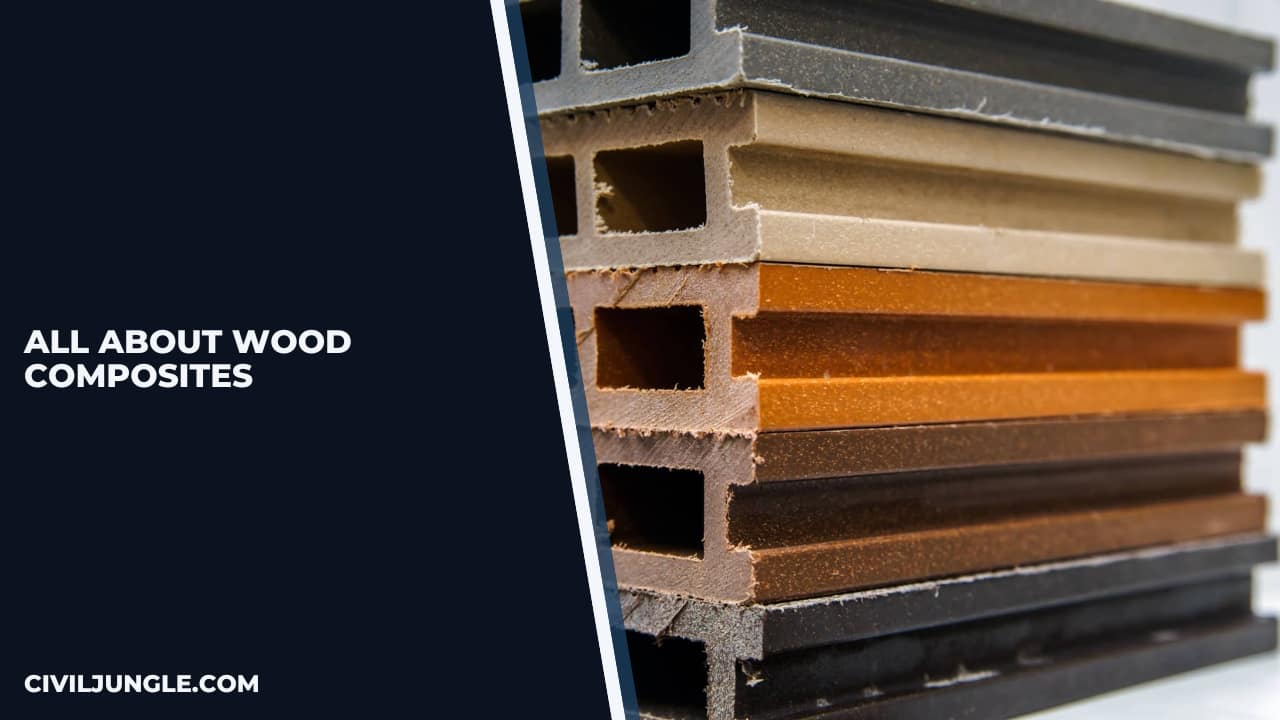
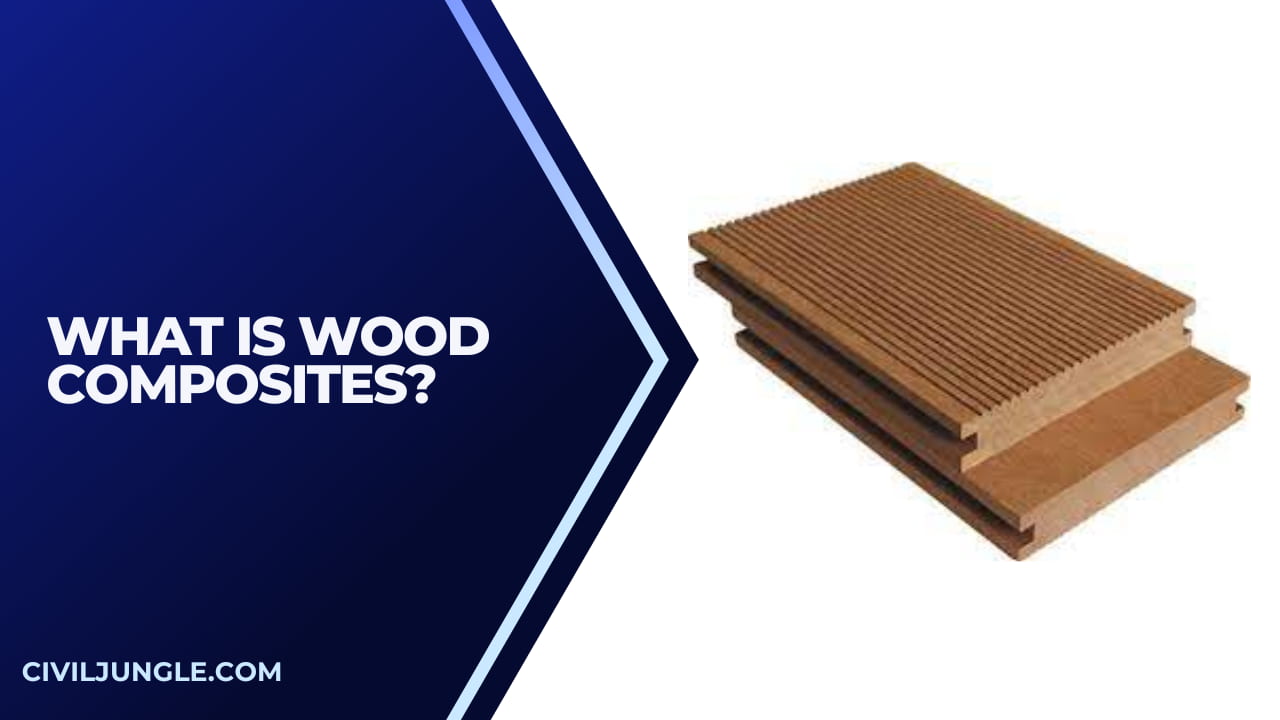
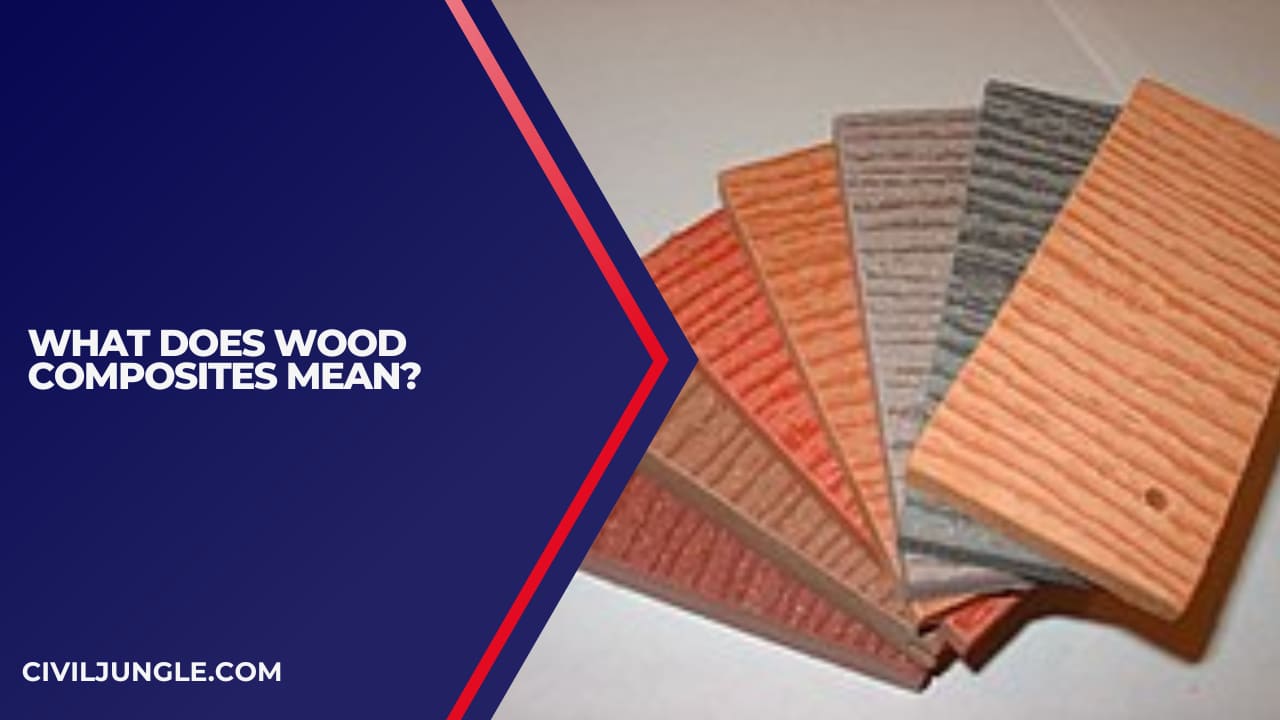
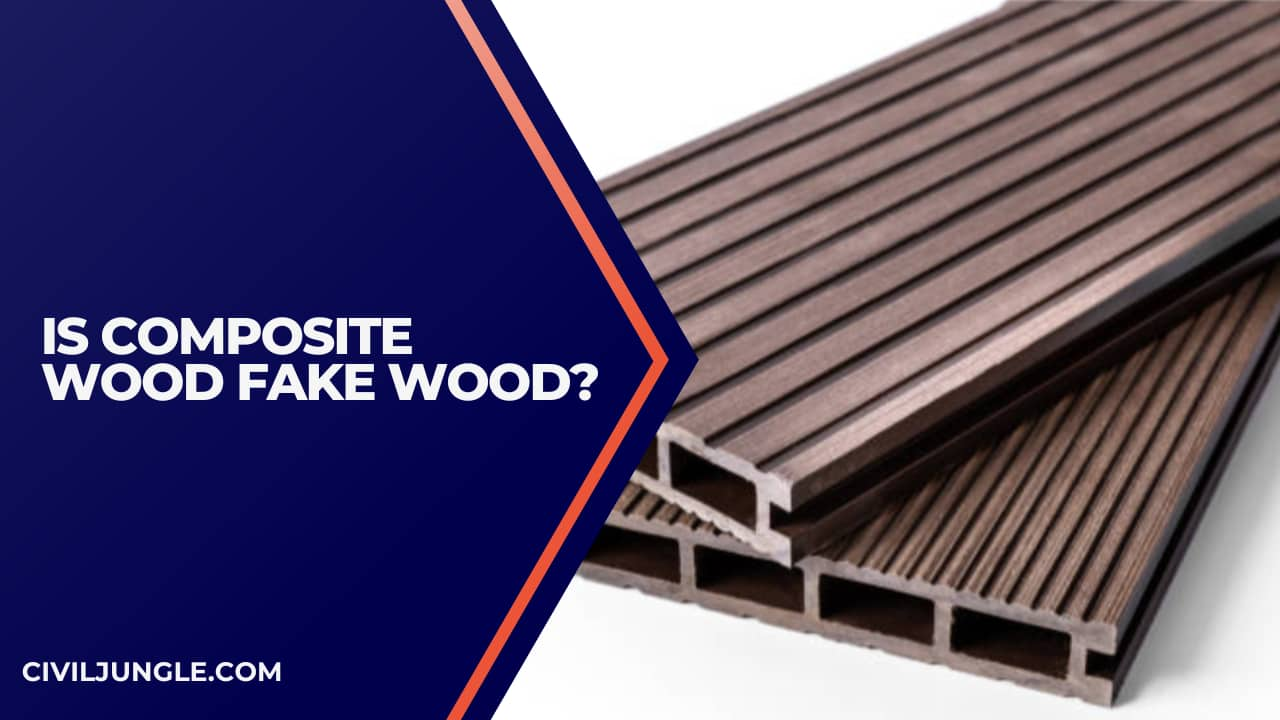
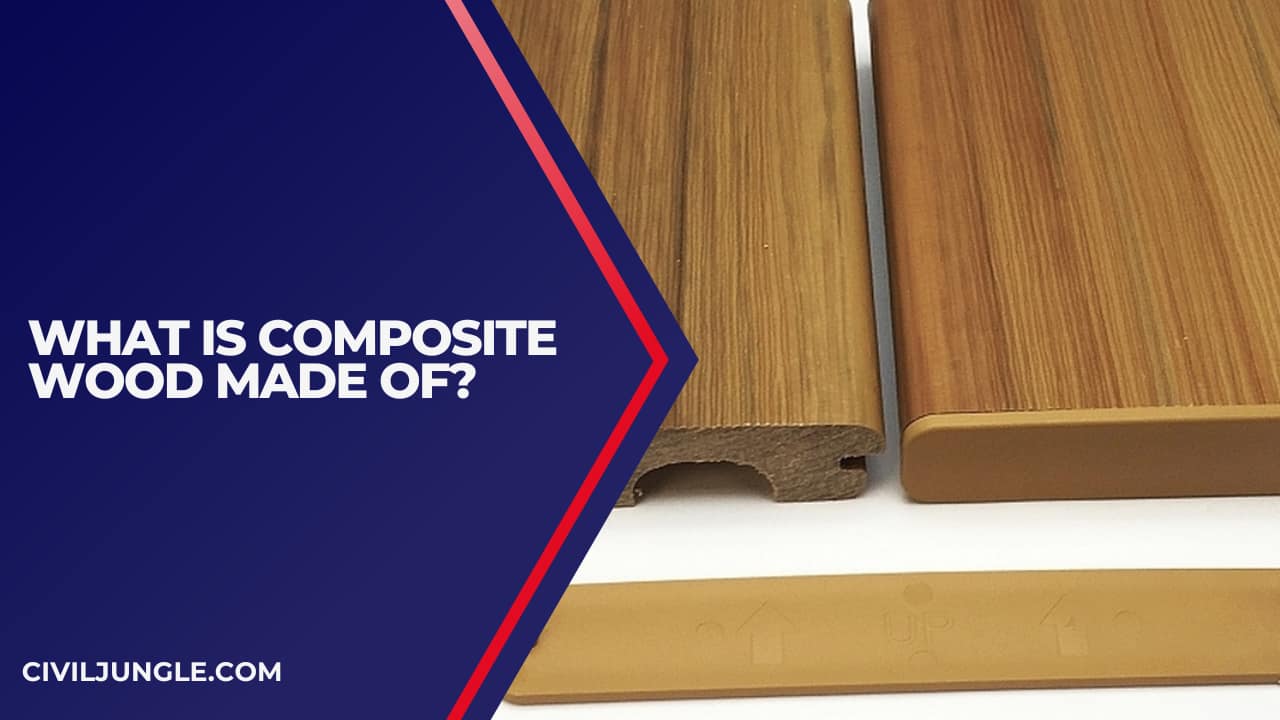
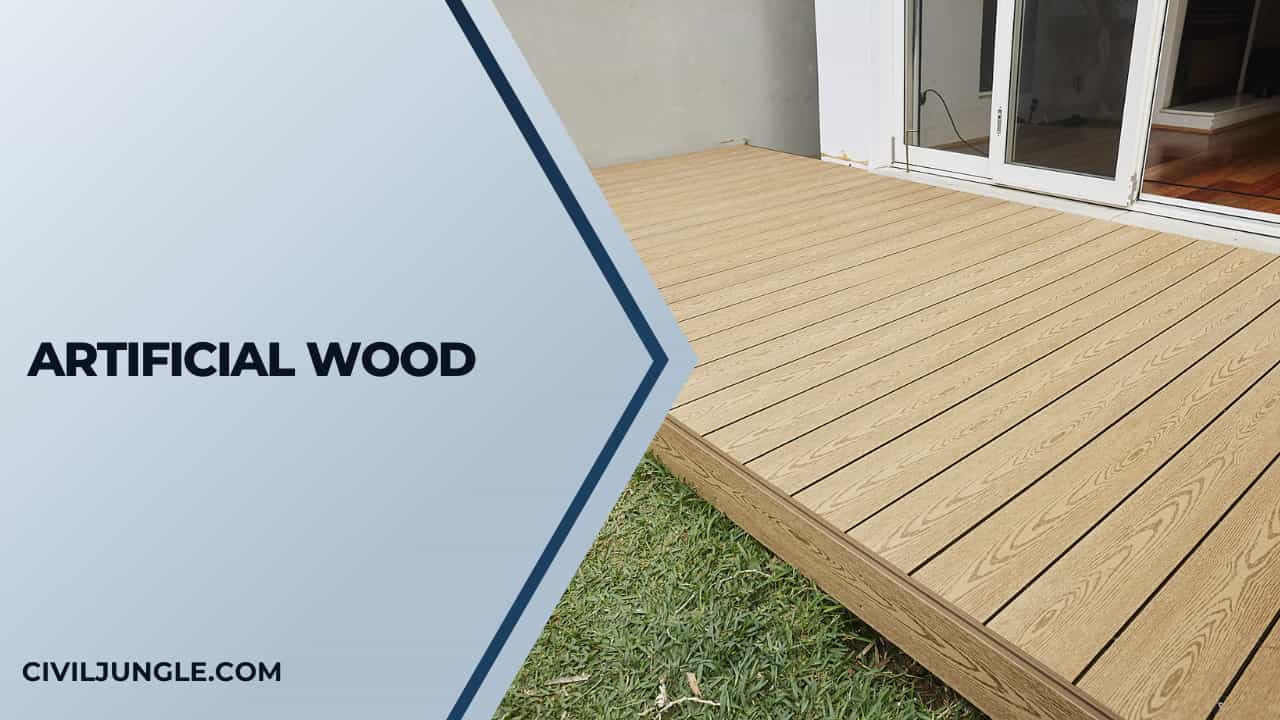
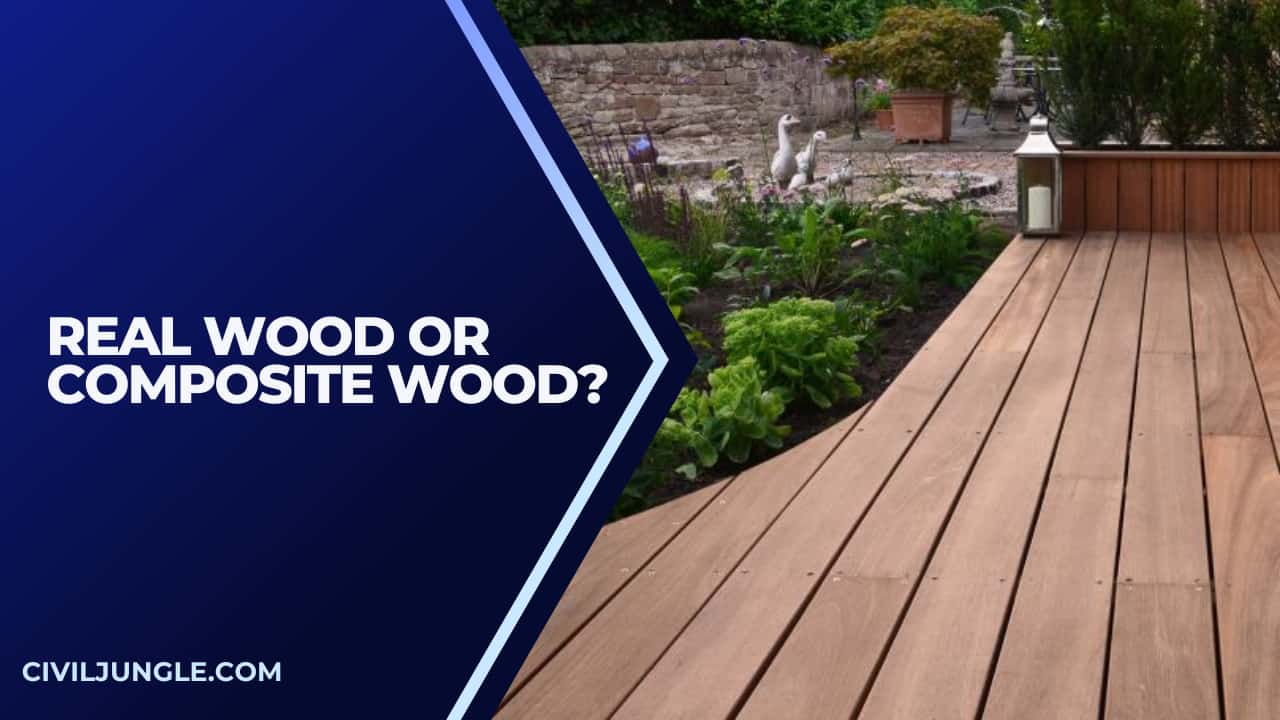
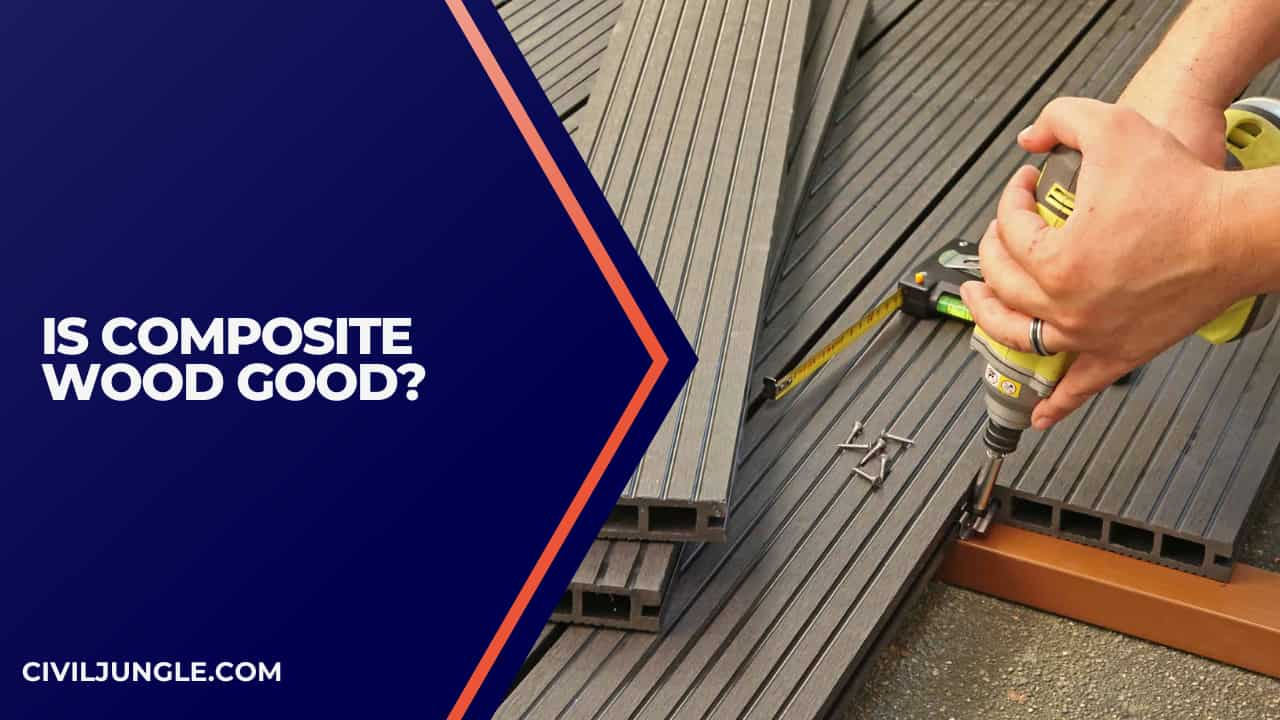
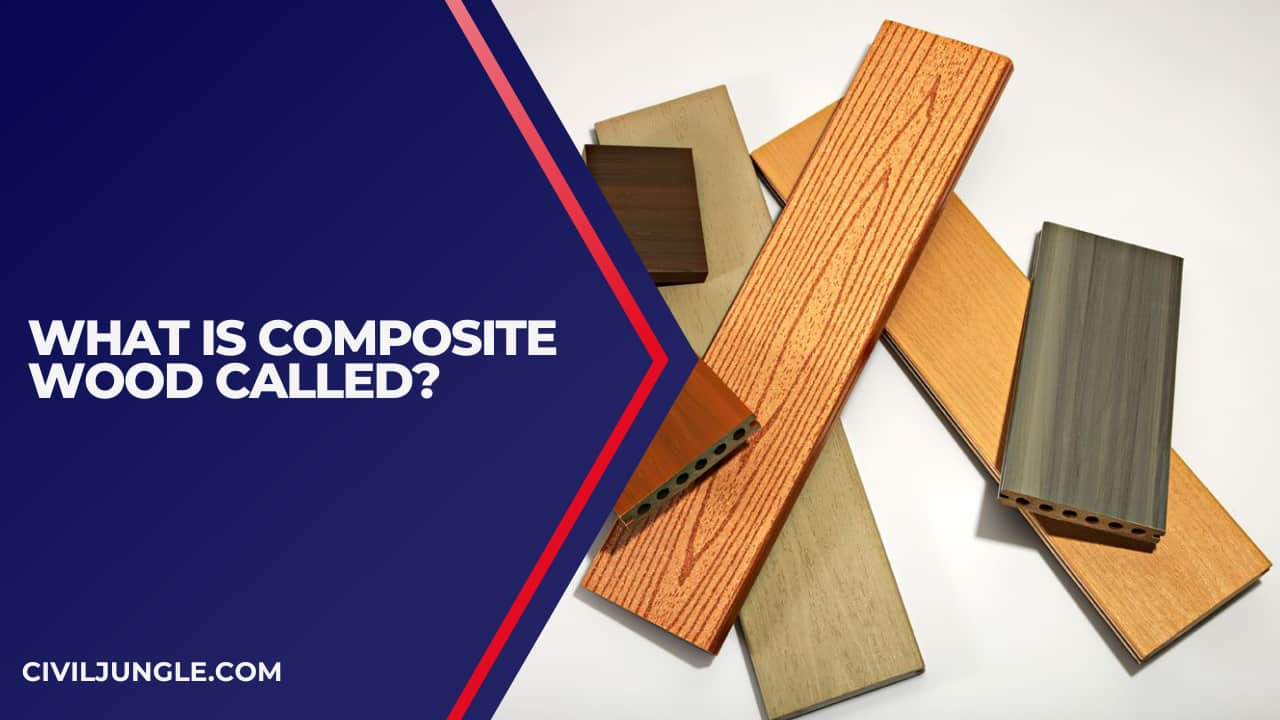

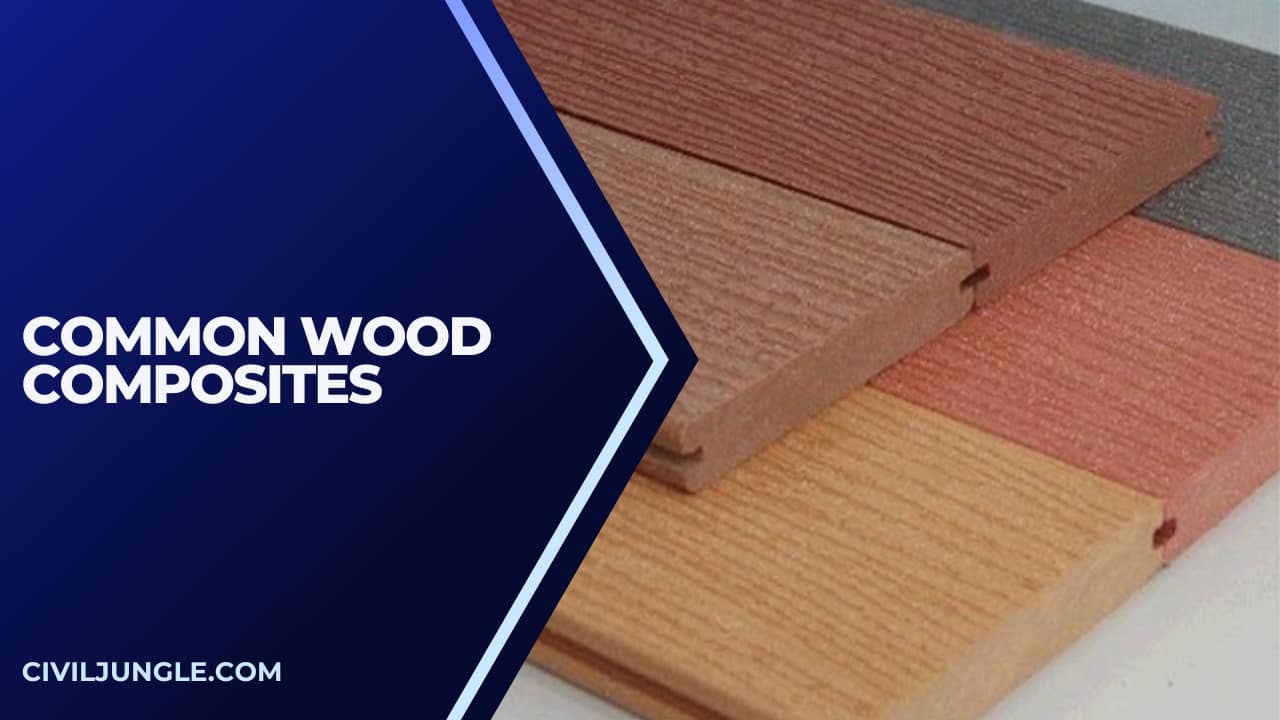
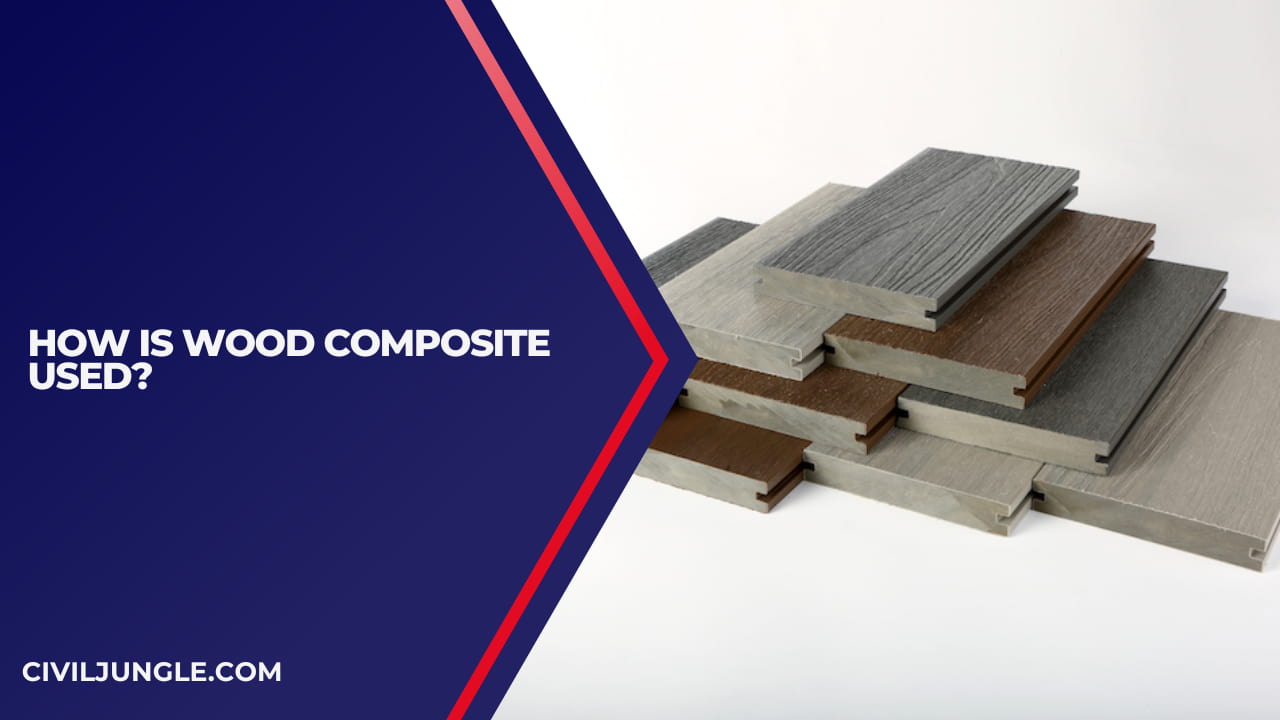

Leave a Reply